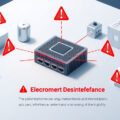In an era defined by rapid technological advances and ever-evolving business demands, hybrid networks are emerging as a vital component of modern connectivity solutions. By blending traditional on-premises infrastructure with cloud-based technologies, organizations can optimize their networks to be more agile, scalable, and capable of addressing diverse business needs. This article delves into what hybrid networks are, their operating mechanisms, the challenges they pose, and the myriad benefits they provide in today’s digital landscape.
What is a Hybrid Network?
A hybrid network refers to an integrated system that employs multiple networking technologies to create a cohesive and flexible infrastructure. This might involve a combination of traditional on-premises data centers, public cloud environments, and other networking styles like Software-Defined Wide Area Network (SD-WAN) and Network-as-a-Service (NaaS) solutions. The goal is to allow enterprises to maintain control over critical data while leveraging the scalability and efficiency of cloud services.

Types and Configurations of Hybrid Networks
Hybrid networks can utilize various topologies, such as star, bus, or mesh, which further enhance their functionality. For instance:
- Star Topology: Ideal for larger networks where each device connects to a central hub, allowing easy fault detection and device addition.
- Bus Topology: Cost-effective for smaller networks, where devices share a single communication line. However, this topology can be problematic if the main cable is damaged.
- Mesh Topology: Provides high redundancy, as each device is interconnected, ensuring that data can continually flow, even if one connection fails.
Each topology has its advantages and drawbacks, which organizations must weigh against their specific needs, operational scale, and budget constraints.
Benefits of Hybrid Networks
1. Scalability and Flexibility
Hybrid networks are designed to adapt to the fluctuating demands of businesses. Enterprises can scale their network capacity as needed without incurring substantial capital expenditures, ensuring they can respond to growth or changes in workload efficiently.
2. Enhanced Security
While moving workloads to the cloud can expose organizations to new security threats, hybrid networks can offer enhanced control over sensitive data by allowing enterprises to keep crucial workloads on-premises. Security solutions integrated across different environments can help address emerging threats in real time.
3. Improved Performance and Reliability
Hybrid networks can optimize application performance by ensuring that critical services are available both on-site and in the cloud, providing redundancy and minimizing downtime. This is particularly crucial for enterprises with global footprints that require consistent, high-performance connectivity.
4. Streamlined IT Management
By consolidating various network services under a single architecture, hybrid networks simplify IT management. Businesses can gain comprehensive visibility into their network operations, making it easier to monitor performance, troubleshoot issues, and enforce security policies uniformly.
5. Cost Efficiency
Organizations can avoid the high costs associated with entirely cloud-based infrastructures or traditional on-premises setups by leveraging hybrid networks. This model enables a pay-as-you-go model, allowing them to utilize resources as needed and avoid unnecessary expenses.
Challenges of Hybrid Networks
Despite their benefits, hybrid networks come with challenges that businesses must navigate:
- Complexity in Management: A hybrid approach may introduce complexities in managing multiple environments, requiring advanced solutions and skilled personnel to handle the integration effectively.
- Security Concerns: With vulnerabilities present across different environments, organizations must ensure robust security measures are in place to protect data and networks from potential attacks.
- Skill Gaps: There may be a shortage of personnel with expertise in both cloud and traditional networking solutions, leading to potential operational delays or inefficiencies.
- Integration Issues: Ensuring smooth communication and interaction among diverse systems can be challenging, often necessitating advanced tools and frameworks.
Future Implications of Hybrid Networks
As enterprises continue to digitalize, hybrid networks are likely to play an increasingly pivotal role in shaping the future of organizational connectivity. With trends toward more remote work and global collaboration, the demand for versatile networking solutions that can accommodate diverse working environments will only grow. Furthermore, technologies such as Internet of Things (IoT) and Artificial Intelligence (AI) integration promise to enhance network capabilities, making hybrid infrastructures more intelligent and responsive.
In conclusion, hybrid networks unlock significant power and potential for businesses seeking agility, security, and innovation in their digital strategies. By embracing this flexible networking paradigm, organizations can ensure they remain competitive and adaptive in an ever-evolving digital landscape.



